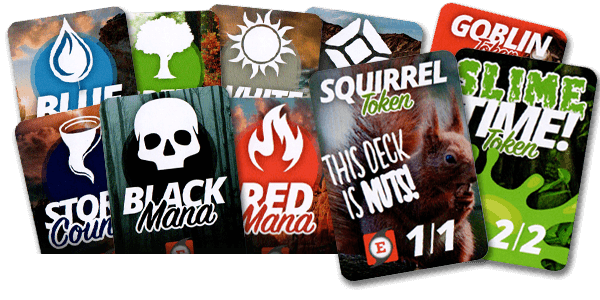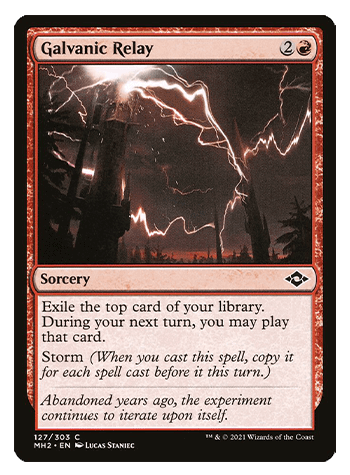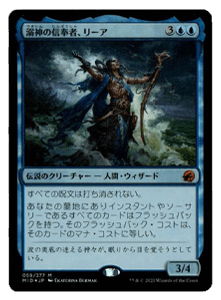This is part of an approximately quarterly tier list article series.
Methodology
Everyone builds a tier list differently. I built mine based on Magic: The Gathering™ Online (MTGO) Challenge results (As collected by Joe Dyer and the Legacy Data Collection Discord). A data-driven approach helps inform my feelings based on my experiences playing with and against decks in multiple settings.
For this tier list, I am looking at all of the data since September 2023, including all three Eternal Weekends! The best way to use a tier list is to help choose what deck to play or how to tune a deck or sideboard to beat a metagame. I consider play-rate and win-rate strongly. The decks I rank are the most played in the format. I will not rank every Legacy deck ever played — there is not enough space. Ranking decks within tiers is splitting hairs. Within a tier, decks are alphabetized.
S Tier
A deck consistently placing one or more copies in a challenge top 8. Normally, these decks reach the threshold to be “bannable.” They have strong win rates and play rates, and players will always consider warping their sideboard, main deck, or even archetype selection based on these decks. An S-tier deck has almost no abysmal and few bad matchups among commonly played decks. If you are not playing one of these decks, you are either wrong or have a good reason.
A Tier
Decks consistently represented via a copy in the top 8 of a challenge. It probably will not top 8 every challenge, but should be in most. An A-tier deck is a strong force in a metagame but not overwhelming. These decks have weaknesses, though bad matchups tend to have lower play rates. Choosing one of these decks for a tournament is almost certainly good.
B Tier
Strategies that will not make most challenge top 8s either due to low power level or play rate. A B-tier deck making a top 8 is not shocking, but zero copies are expected in most top 8s. These decks maintain an exceptional win rate against some higher-tier decks but lower against others. To choose to play a B-tier deck in a tournament is to put yourself at a disadvantage; willing to play a specific metagame read.
C Tier
Typically specialist decks that rarely make top 8s; often in the hands of archetype masters. Generally, archetype masters grind these decks and eventually get enough wins to top 8, but remains a surprise. The play rate of a C-tier deck is generally in the one to two players per event space. While they have some good matchups, format pressures likely prevent them from entering a higher tier, or the strategy is inherently weak.
D Tier
Archetypes that are underpowered or rarely played. It is sometimes surprising to see these decks registered in any amount in a challenge.
The Tier List
S Tier
No Decks
A Tier
Grixis Delver (-)
Turbo Goblins (B→A)
Lands (B→A)
ReScaminator (Rename from Dimir Scam)
Temur Delver (-)
B Tier
8-Cast (-)
Beanstalk Control (A→B)
Beseech Storm (D→B)
Doomsday (C→B)
Boros Initiative (A→B)
Moon Stompy (-)
Painter (-)
Selesnya Depths (-)
The EPIC Storm (D→B)
C Tier
Cephalid Breakfast (-)
Cradle Control (-)
Death & Taxes (-)
Death’s Shadow (B→C)
Sneak & Show (-)
Stiflenought (New!)
Rakdos Reanimator (B→C)
Rhinos (B→C)
D Tier
Ad Nauseam Tendrils (-)
Dredge (-)
Jeskai Control (-)
Mystic Forge Combo (C→D)
Oops! All Spells (-)
The EPIC Gamble (-)
The Metagame
It is impossible to talk about Legacy without discussing possibly banning a black card from a fair or semi-fair deck. [[Orcish Bowmasters]] and [[Grief]] tend to be at the top of those discussions for good reason. They see play in several of the A-tier decks.
No deck in the format feels head and shoulders above the rest in a dangerous way or should be banned
for power level. ReScaminator got close for a few weeks this quarter, but eventually, the metagame adapted, and more stock tempo decks maintained their usual dominance over Legacy.
Beanstalk control has not maintained its numbers in this arms race to be the best fair deck. I am unsure if this is tempo players figuring out how to beat overwhelming card advantage or if the [[Up the Beanstalk]] players have not figured out how to go over the top of [[Questing Druid]] or [[Atraxa, Grand Unifier]].
The fair arms race quashed prison decks, which
waned in strength. Even just playing in leagues for semi-random match-ups, [[Chalice of the Void]] prison is one of the least represented archetypes. If you consider Lands a prison deck, the macro archetype still exists, but it is markedly different than the [[Ancient Tomb]] dominance the format had to start the year. Boros Initiative, in particular, has not achieved many major results during 2024.
Overplayed & Underplayed
Overplayed
There does not seem to be a deck where the play and win rates are unbalanced to push players off the deck. Beanstalk Control is the closest, and it is more likely that they need slight adjustments to deck building rather than to shift archetypes altogether.
Underplayed
The EPIC Storm — Look if two members of the TES team can top 8 the first challenge we’ve all played together (and one in ninth!), the deck has legs. When played correctly, TES will obliterate these blue decks that largely ignore unfair decks to focus on each other.
Storm Decks
It is wrong to play [[Dark Ritual]] Storm decks without [[Beseech the Mirror]]. Builds of Storm with [[Echo of Eons]] and [[Orcish Bowmasters]] have emerged as powerful and fast alternatives to the traditional ANT vs. TES “debate.” They play four copies of [[Echo of Eons]] to abuse the London Mulligan alongside [[Beseech the Mirror]] for [[Gaea’s Will]]. Because of [[Orcish Bowmasters]], the deck does not always need to loop through the graveyard to deal lethal damage.
[[Orcish Bowmasters]] is main deck removal for cards like [[Thalia, Guardian of Thraben]]. Post board, they have one of the better jukes around most common Storm hate with the [[Leyline of the Void]] and [[Helm of Obedience]] combo. While disruptible by an opposing [[Leyline of the Void]], I am excited to see a new powerful Storm variant explored alongside The EPIC Storm.
Rating my Rating
Disagree with this tier list? Let me know on Twitter, Discord, or the comments of wherever you found this article! If you want early access to this article, check out The EPIC Storm Patreon and support us there.





